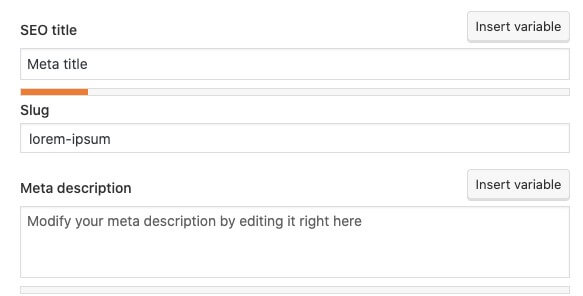Your website now exists as a publicly accessible portal. You chose a platform from which it’s based. You decided what it should look like and what plugins to install. You created your Google AdSense account and inserted an advertisement on your website to monetize it. You should also take care of the position your website is going to have within search engine results. It is a complex process that involves a multitude of problems and right now we’ll tackle one of them which is Search Engine Optimization (SEO). The goal is to put the content of your internet portal on one of the highest positions within search results.
You have to remember that optimization takes several stages and each of them matters when trying to achieve a goal, which is a high position in search results.
Keywords
When you are creating content for your website, for example, an article, you need to pay attention to the keywords for which you want to position your content and properly saturate the article with those words. Keywords, also known as key phrases, are words that help you find text in a search engine. When selecting them, you must remember that they should be consistent with the topic of the article and also be competitive. In the process of selecting the right keywords, tools such as Google Keyword Planner, Answer The Public or Ubersuggest may be useful. Pay attention to the use of different types of phrases: one-word, two- and three-word, as well as a long tail (for example “how to insert ads in WordPress”).

Choosing the right key phrases and then using them in your content is very important. Keywords should be found in several places: in paragraphs, and in headers – the latter is especially worth looking into. You should not overdo it, or force them into the text, instead try also adding synonyms for your main keywords.
Headers
Another thing that affects Search Engine Optimization is the proper structure of your article. The advantage of the right structure lies not only in optimization, but also makes your article easier to read and influences the aesthetic value of your content. You achieve it by dividing your document into sections and paragraphs. Before each section, that should contain from one to three paragraphs, use headers of the appropriate tier, keeping in mind their hierarchy. The role of headers is to indicate the most important parts of your article. When using them, remember that each tier should be reflected in the content of the article and that their one – H1 – may only occur once. Each of the headers should also be preceded by a paragraph of plain text; you should be wary of using headers of different levels in succession (for example H3 immediately under H2).
Images with Alt Attribute
Images serve as a break within the content of the article. Such breaks improve the reception of the text, as well as emphasize and visualize some of the themes within the articles. You may use your own photos or infographics, or download them from paid or free photo stocks. If you want your graphics to have an effect on the process of content optimization, they must contain the alt attribute. It is an alternative text that describes the content of the graphic. This information is intercepted by search engine indexing robots and this way it affects positioning. In the alt attribute, you may include keywords that match your text. Applying alt text to images also helps users reach your article through the Google Image search engine.

Internal Linking
Another important matter in the context of optimization for search engines is internal linking. Internal links allow users to redirect to other content within your portal, and thanks to this they will spend more time within your website. Internal linking also serves as a redirect for search engine robots, that will this way reach other content and pages within your portal and support the long indexing process.
Meta Title and Meta Description
When optimizing your content for search engines, you should definitely take a look at your meta tags, specifically meta title, and meta description. Those structural elements are very important in the context of positioning. Meta title, or title, is a priority element and should contain keywords. The meta description tag is the description of the article. It should contain the basic information about the article, as well as call-to-action sentence that would encourage users to read your content. As part of the meta description you may use keywords that would be highlighted by the search engine, but, same as with the content on the page, be wary of overdoing it. In both cases remember about the appropriate length of the text (approximately it’s about 50-70 characters in the meta title tag and 156 characters in the meta description).

Summary
The content you create and publish on your website should contain reliable information on the given topic. In order for your articles to be high on the search results pages, you will have to take care of positioning your website. This process includes the optimization of your content for search engines (SEO). Pay attention to the proper selection of keywords and saturating your article with them, the use of headers, the alt attribute for images, as well as internal linking and very important meta title and meta description tags.

